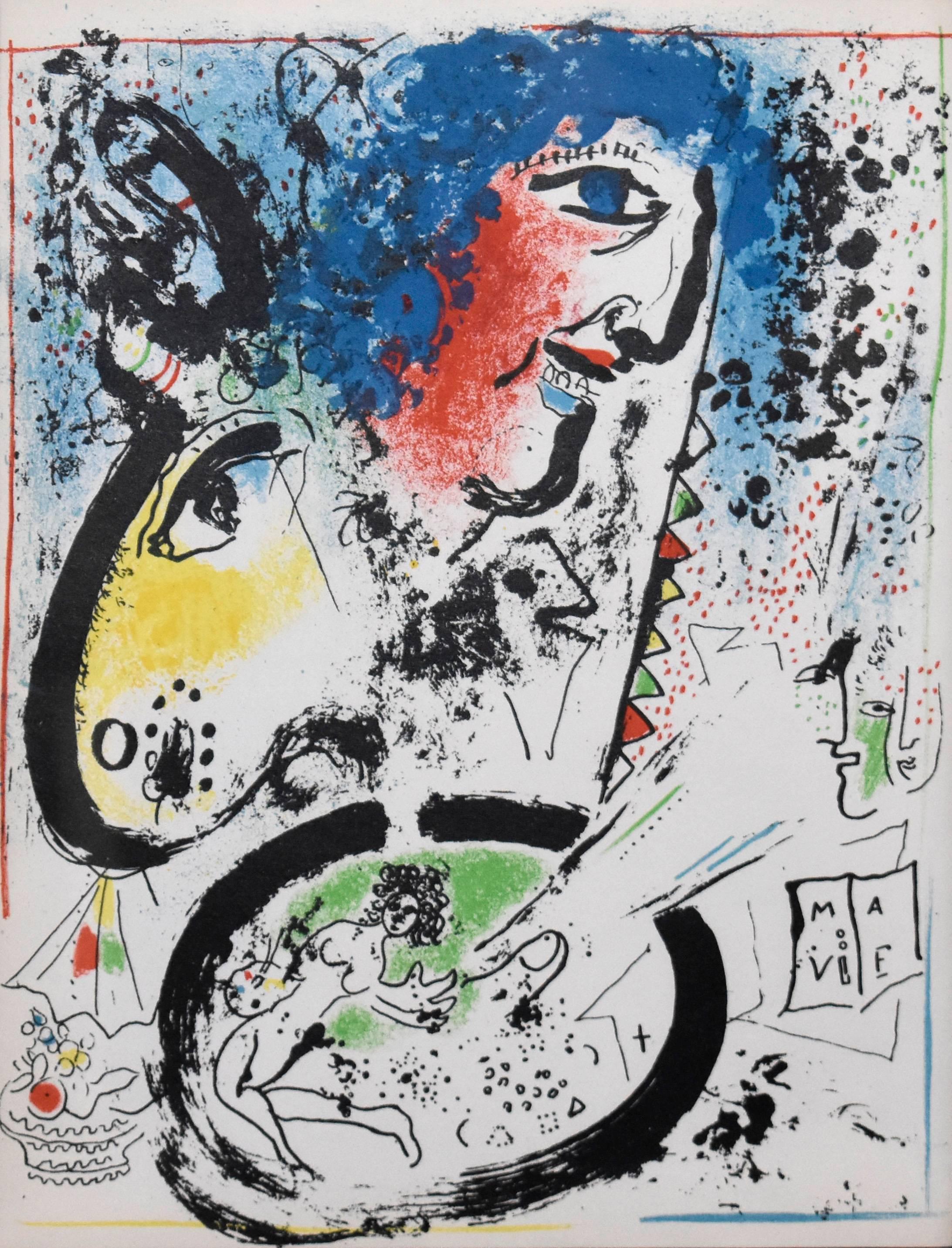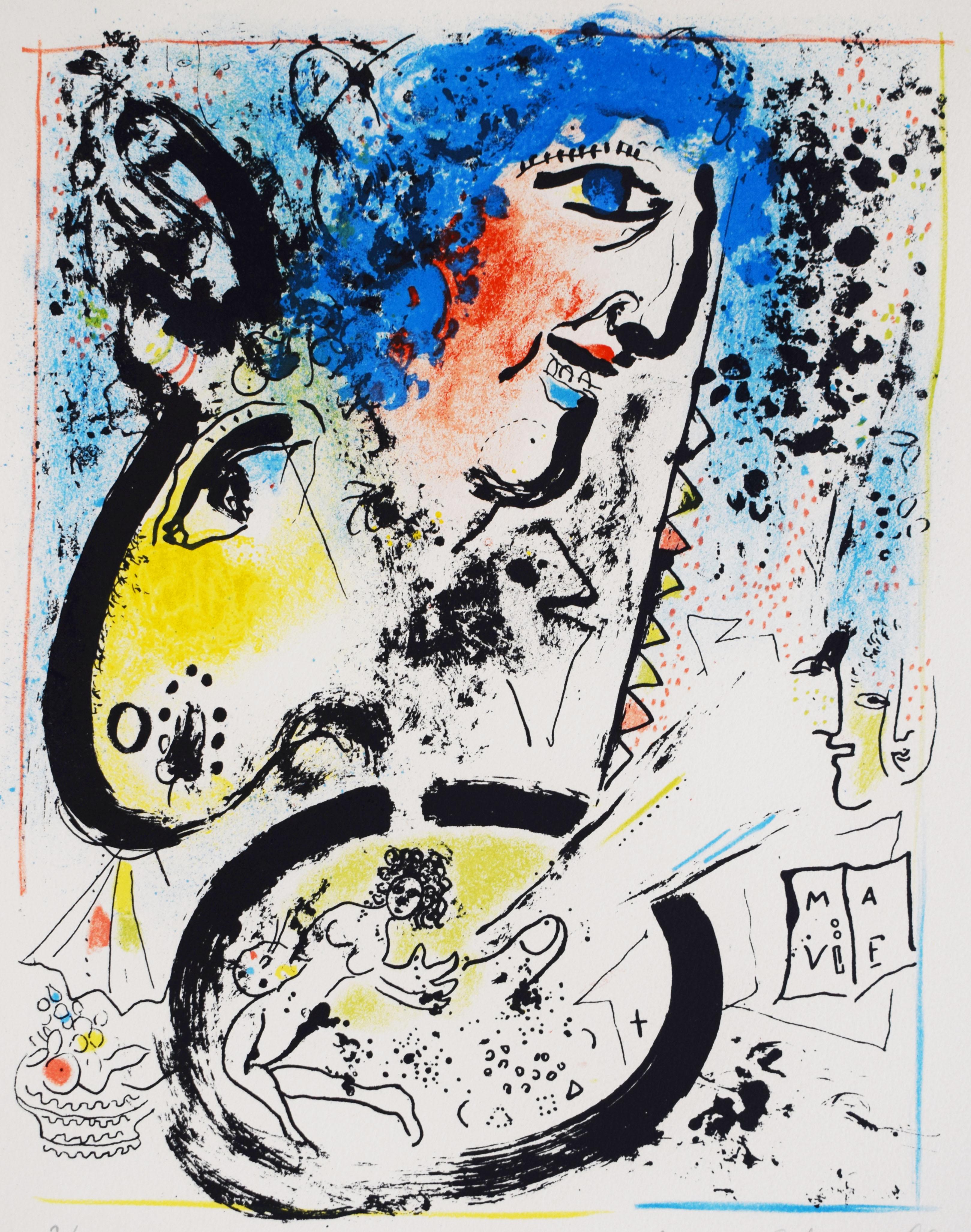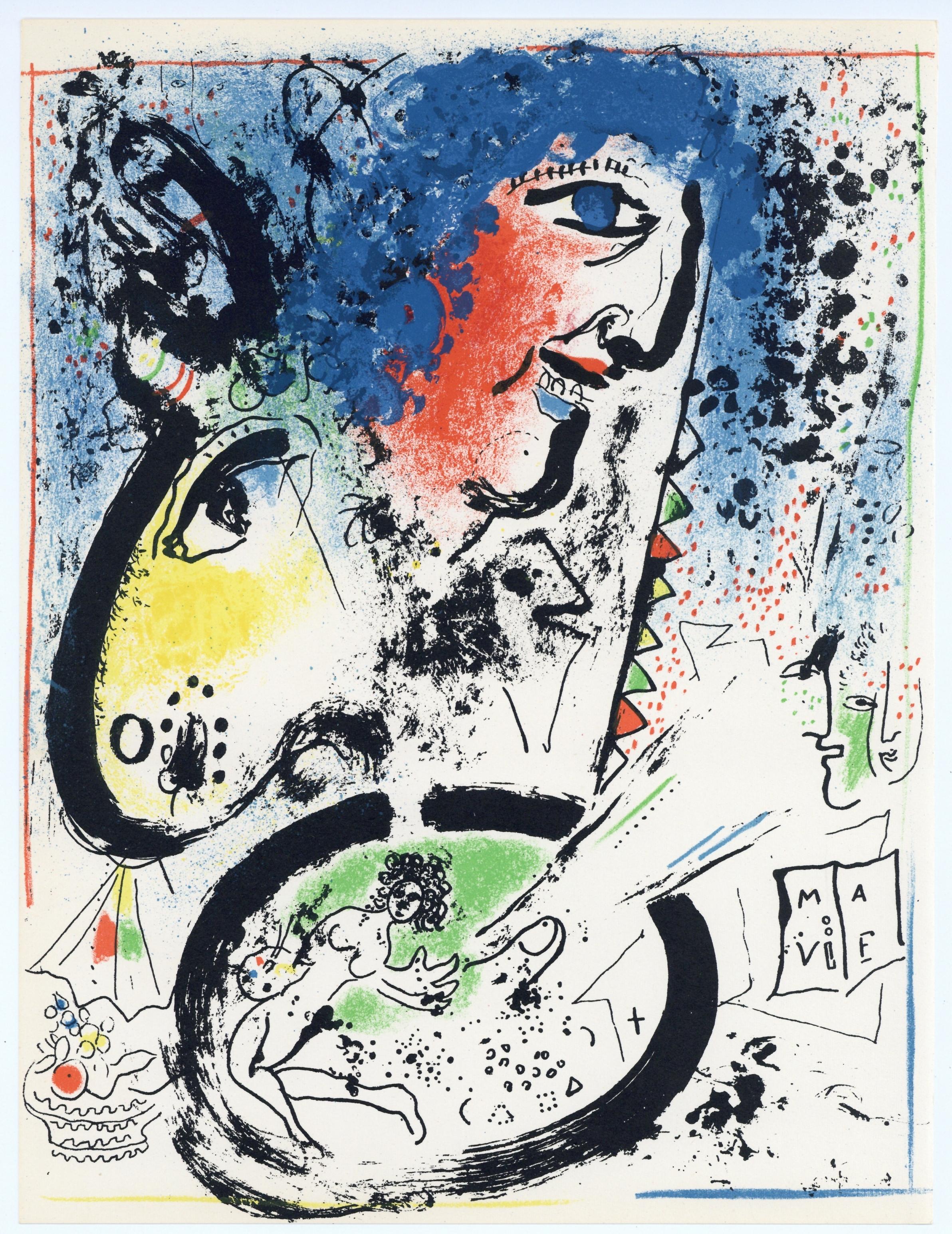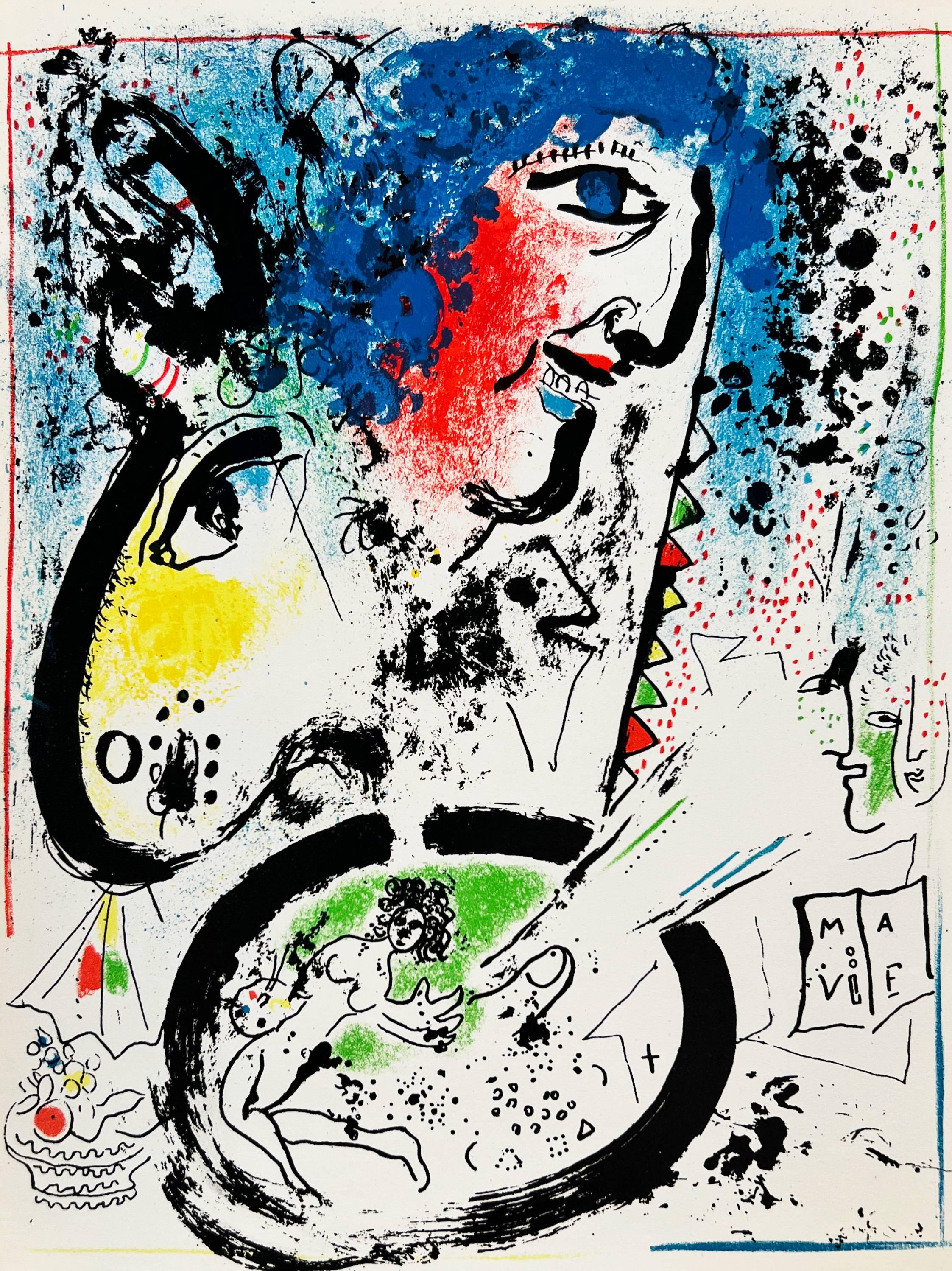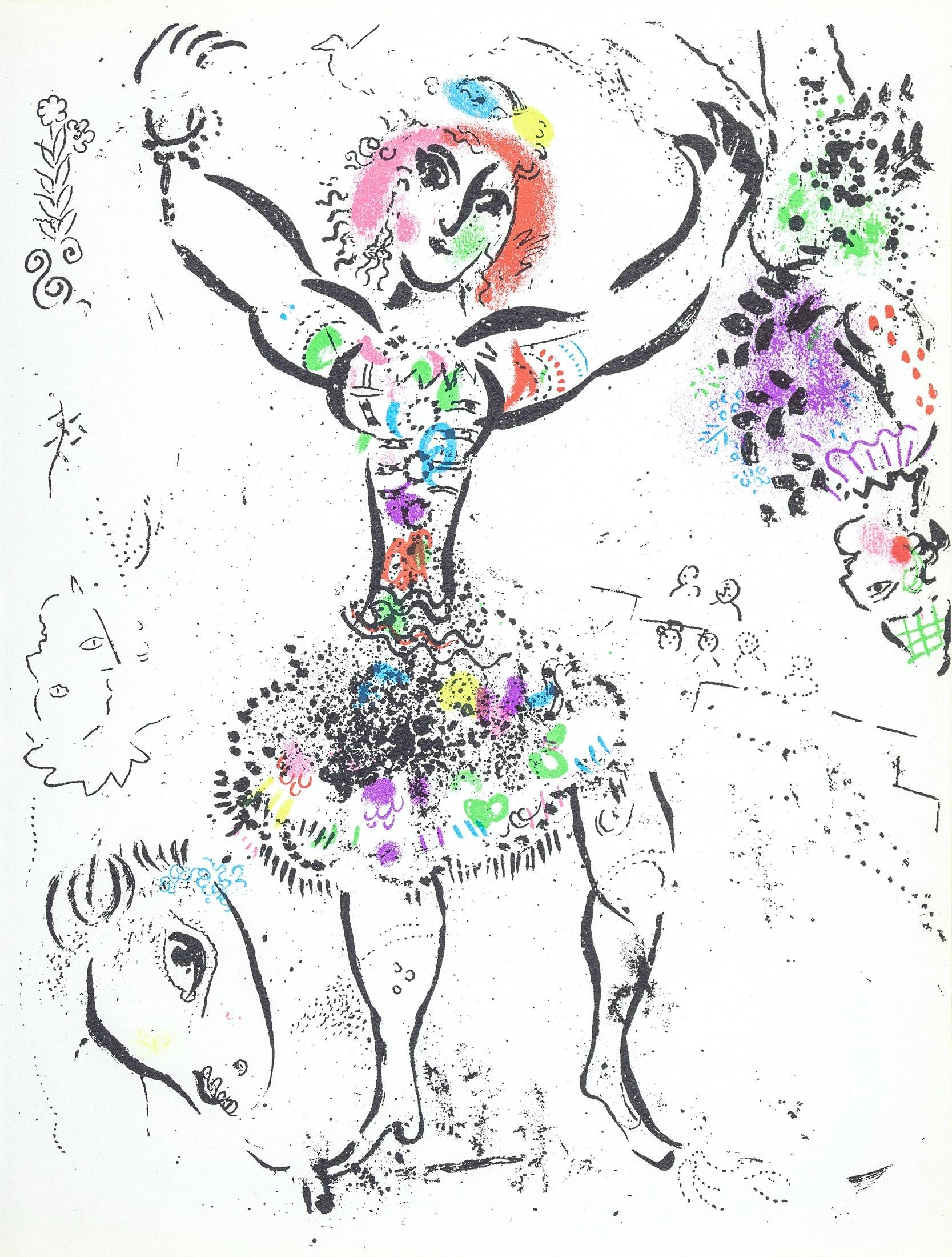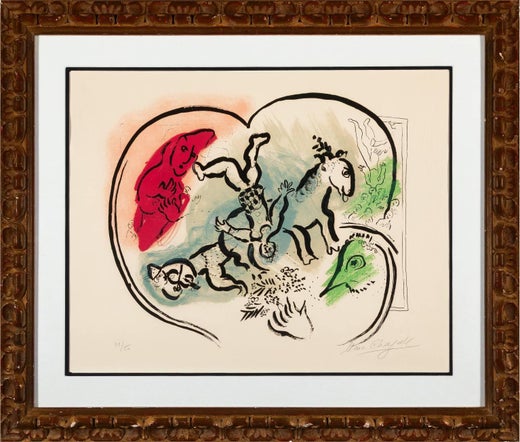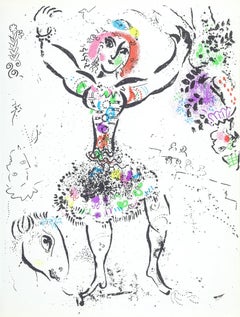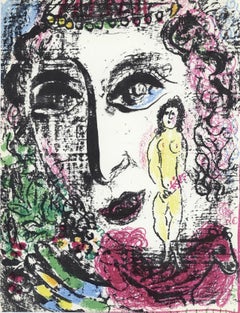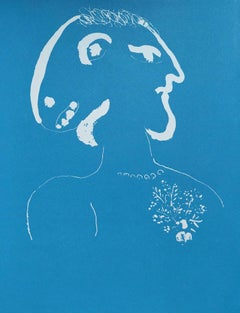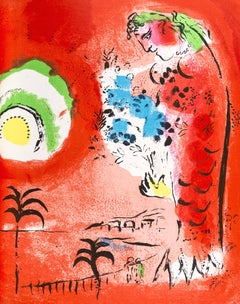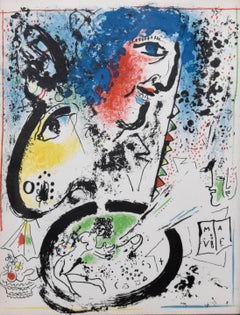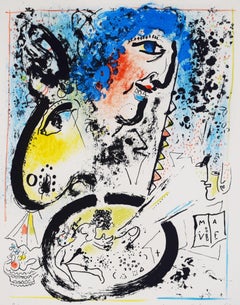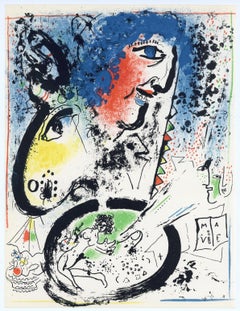This exquisite lithograph by Marc Chagall (1887–1985), titled Autoportrait (Self-Portrait), from the album The Lithographs of Chagall, Volume I, originates from the 1960 edition published by Andre Sauret, Editeur, Monte Carlo, and George Braziller, Editeur, New York, and printed by Mourlot Freres, Paris, October 1960. This intimate and reflective composition captures Chagall’s enduring dialogue with identity, memory, and imagination. In Autoportrait, the artist depicts himself surrounded by symbols of his life and art—a bouquet, a palette, and a spectral face that emerges from his inner world. Rendered in radiant tones and fluid lines, the work fuses reality with dream, revealing the introspective lyricism that defines Chagall’s vision. The self-portrait serves not only as an image of the artist but as an allegory of creativity itself: the fusion of love, color, and memory that animates his art. Through this deeply personal depiction, Chagall transforms the act of self-representation into a poetic meditation on the human spirit and the imagination’s power to transcend time and place.
Executed as a lithograph on velin paper, this work measures 12.216 x 9.875 inches (31.03 x 25.08 cm). Unsigned and unnumbered as issued. The edition exemplifies the exceptional craftsmanship of the Mourlot Freres atelier, renowned for its close collaboration with Chagall and its technical perfection in fine art lithography.
Artwork Details:
Artist: Marc Chagall (1887–1985)
Title: Autoportrait (Self-Portrait), from The Lithographs of Chagall, Volume I, 1960
Medium: Lithograph on velin paper
Dimensions: 12.216 x 9.875 inches (31.03 x 25.08 cm)
Inscription: Unsigned and unnumbered as issued
Date: 1960
Publisher: Andre Sauret, Editeur, Monte Carlo, and George Braziller, Editeur, New York
Printer: Mourlot Freres, Paris
Catalogue raisonne references: Cain, Julien, and Fernand Mourlot. Chagall Lithographe. Andre Sauret, Editeur, 1960, illustration 282. Cramer, Patrick, and Meret Meyer. Marc Chagall: Catalogue Raisonne Des Livres Illustres. P. Cramer ed., 1995, illustration 43.
Condition: Well preserved, consistent with age and medium
Provenance: From the album The Lithographs of Chagall, Volume I, published by Andre Sauret, Editeur, Monte Carlo, and George Braziller, Editeur, New York, 1960
Notes:
From the album, The Lithographs of Chagall, Volume I, 1960. Published by Andre Sauret, Editeur, Monte Carlo, and George Braziller, Editeur, New York; printed by Mourlot Freres, Paris, October 1960. Excerpted from the album, This album, which was designed and compiled by Fernand Mourlot and Andre Sauret, was finished in October 1960. The reproductions were printed on the presses of Draeger Freres, and the original lithographs on the presses of Mourlot Freres. The Imprimerie Nationale de France is responsible for the typography. There exists a special edition, in French, of this album composed of C examples on velin d'Arches numbered from I to C, and including two original lithographs, in a limited edition of C copies, numbered and signed by the artist, and a series, with margins, of the XII original lithographs contained in this album.
About the Publication:
The Lithographs of Chagall, Volume I, published in 1960 by Andre Sauret, Monte Carlo, and George Braziller, New York, marks the beginning of a monumental five-volume catalogue project chronicling Marc Chagall’s prolific achievements in lithography. Conceived and supervised by Fernand Mourlot—Chagall’s long-time printer and collaborator—the series celebrates the technical brilliance and emotional depth of Chagall’s printmaking. Volume I features twelve original lithographs alongside meticulously printed works that trace the evolution of Chagall’s imagery from the 1920s through the 1950s. The publication exemplifies the partnership between artist, printer, and publisher that defined mid-century fine art printing in France, uniting precision craftsmanship with poetic expression. Through its vivid depictions of lovers, angels, musicians, and self-portraits, this volume captures the essence of Chagall’s artistic universe, where color becomes music and dream becomes reality. The Lithographs of Chagall series remains one of the most significant undertakings in modern printmaking, a testament to both Chagall’s visionary imagination and Mourlot’s unparalleled mastery of the lithographic process.
About the Artist:
Marc Chagall (1887–1985) was a Belarus-born French painter, printmaker, and designer whose visionary imagination, radiant color, and deeply poetic symbolism made him one of the most beloved and influential artists of the 20th century. Rooted in the imagery of his Jewish heritage and the memories of his childhood in Vitebsk, Chagall’s art wove together themes of faith, love, folklore, and fantasy with a dreamlike modern sensibility. His unique style—merging elements of Cubism, Fauvism, Expressionism, and Surrealism—defied categorization, transforming ordinary scenes into lyrical meditations on memory and emotion. Influenced by Russian icon painting, medieval religious art, and the modern innovations of artists such as Pablo Picasso, Henri Matisse, and Georges Braque, Chagall developed a profoundly personal visual language filled with floating figures, vibrant animals, musicians, and lovers that symbolized the transcendent power of imagination and love. During his early years in Paris, he became an integral part of the Ecole de Paris circle, forming friendships with Amedeo Modigliani, Fernand Leger, and Sonia Delaunay, and his creative spirit resonated with that of his peers and successors—Alexander Calder, Alberto Giacometti, Salvador Dali, Joan Miro, Wassily Kandinsky, Marcel Duchamp, and Man Ray—artists who, like Chagall, sought to push the boundaries of perception, emotion, and form. Over a prolific career that spanned painting, printmaking, stained glass, ceramics, and stage design, Chagall brought an unparalleled poetic sensibility to modern art, infusing even the most abstract subjects with human warmth and spiritual depth. His works are held in the most prestigious museums around the world, including the Museum of Modern Art, the Centre Pompidou, the Tate, and the Guggenheim, where they continue to inspire generations of artists and collectors. The highest price ever paid for a Marc Chagall artwork is approximately $28.5 million USD, achieved in 2017 at Sotheby’s New York for Les Amoureux (1928).
Marc Chagall Autoportrait, Chagall Mourlot Freres, Chagall Andre Sauret, Chagall George Braziller, Chagall 1960 lithograph, Chagall velin, Chagall collectible print, Chagall modernist lithograph.
